Mites

Mighty Mites
They hide in your bed and breed on your face. They’re smaller than the period at the end of this sentence.
By Rob Dunn
Photographs by Martin Oeggerli
Several years ago I made a bet about face mites, animals that live in hair follicles. They are so small that a dozen of them could dance on the head of a pin. They are more likely, though, to dance on your face, which they do at night when they mate, before crawling back into your follicles by day to eat. In those caves mother mites give birth to a few relatively large mite-shaped eggs. The eggs hatch, and then, like all mites, the babies go through molts in which they shed their external skeleton and emerge slightly larger. Once they’re full size, their entire adult life lasts only a few weeks. Death comes at the precise moment when the mites, lacking an anus, fill up with feces, die, and decompose on your head.
Currently two species of face mites are known; at least one of them appear to be present on all adult humans. My bet was that even a modest sampling of adults would turn up more species of these mites, ones that are totally new to science.
Biologists often make bets; they call them predictions to sound fancier. My bet was based on an understanding of the tendencies of evolution and of humans. Evolution tends to engender its greatest richness in small forms. Humans, on the other hand, tend to ignore small things. Aquatic mites, for example, live in most lakes, ponds, and even puddles, often in densities of hundreds or thousands per cubic meter. They can even be found in drinking water, yet few people have ever heard of aquatic mites, including, until recently, me. And I study tiny things for a living.
Mites also live in dust, where they have found unwelcome fame by eating the bits of dead skin that trail behind us everyplace we go. Our shadows of shed life sustain multitudes.
Some of the real monsters of the mite world live in soil, where one can find predatory mites armed with a medieval arsenal of mouthparts. Some have jaws with sharklike teeth; others bear smooth blades that snap together with tremendous force; still others stab with sharp and deadly sabers. These beasts stalk the tunnels of worms and the tiny holes between grains of sand.
Other mites live in rain forest canopies, on leaves and in the soil that accumulates in the nooks and crannies where branches meet trunks, and in the cups of epiphytic plants.
Even some of our food is mity. The flavor of Mimolette cheese comes from their tunneling, eating, excreting, and coupling. In fact, it’s no exaggeration to say that mites alter the world. They can make soil turn over faster or slower, decomposition speed up or slow down, crops grow sick or healthy. Their little limbs punch far above their weight.
Just how many species of mites exist in the world today is not well understood. Probably at least a million, but no one knows enough to say with confidence, nor will anyone know for decades. Museum collections are filled with mite species no one has yet had a chance to study. Some undoubtedly offer fascinating evolutionary stories. Others eat herbivorous insects and could benefit agriculture or medicine. Still others may be vectors for deadly pathogens.
Another reason for my bet: Mites are specialists that occupy every conceivable niche, including the trachea of bees, the shafts of feathers, the anuses of turtles, the stink glands of bugs, the digestive systems of sea urchins, the lungs of snakes, the fat of pigeons, the eyeballs of fruit bats, the fur around vampire bat penises. Living in these habitats necessitates special hairs, chemicals, foot pads, mouthparts, and tricks. It also requires a way to get from one patch of good habitat to the next.
Some mites ride from flower to flower in the nostrils of hummingbirds. When the bird hovers at a flower, the mite sniffs the blossom to see if it’s the right kind for finding a mate among the petals. If it is, the mite runs down the bird’s beak at speeds that are, in terms of body lengths traveled, some of the fastest on Earth.
Other mites hitch rides on the backs of beetles or ants; some fly in the ears of moths. One species of mite hangs on to the hind foot of the army ant Eciton dulcius, and its hind legs serve as surrogates for the ant’s own claw. Others float through the clouds or on loops of silk that they produce and unfurl into the wind.
All of this is to say that if one can imagine a habitat, however narrow, mites are there, even if that habitat is hard to reach on legs just microns long and a tenth the thickness of a human hair.
Yet the marvels of mite transport pale in comparison with the idiosyncrasies of mite reproduction. Some clone themselves. Others eat their mothers. Others mate with their sisters while still inside their mothers and then, during birth, kill their mothers. In the nostrils of hummingbirds and the ears of moths lurk Greek tragedies of small, strange lives.
The habitats that offer mites the most advantages are bodies, whether of mammals, birds, insects, or any other creature larger than a mite. Bodies are the buffet bus of life, providing food and transportation. Mites that live on bodies are specially adapted to hold fast to their host, even when it runs, swims, or flies.
Most bird species host more than one specialized mite found nowhere else. One species of parakeet has 25 different species of mites living on its body and in its feathers, each in a different microhabitat. Rabbits host several species of mites, mice as many as six. Even seals have their own mites.
Given such diversity and specialization, it’s easy to imagine that a roomful of people (think of all the habitats!) would be fertile ground for discovering mites—and for making good on my bet. For a long time this was just a conversation starter at slow parties. But recently some collaborators and I gathered a group of folks and asked them to sample their own skin. After some swabbing, poking, and DNA sequencing, we found mites on every adult we sampled, including one species new to science that seems to live mainly on people of Asian descent. Think of it: A mite that probably lives on millions of humans, maybe even billions, and yet it was totally unknown until that moment. I was thrilled.
How did mite systematists—scientists who name new species—respond? A few were excited; the rest shrugged. They knew that my bet for mite diversity was an easy one, a fact of life they witness every time they examine a scoop of soil, peer into moss, or swab a friend. In fact, one need look no farther than the mites pictured in this article, most of which are unnamed species. In all likelihood they will long remain that way, mysteries in plain view, like most of life.
Rob Dunn is an evolutionary biologist at North Carolina State University. Swiss photographer Martin Oeggerli specializes in scientific microscopy.
All photographs made with support from School of Life Sciences FHNW, Switzerland. Sources: Heather Proctor, University of Alberta, Canada; Elke McCullough, University of Graz, Austria
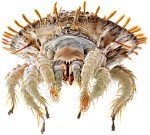
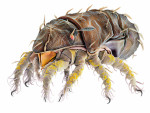
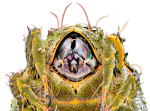
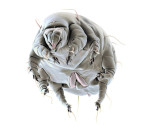

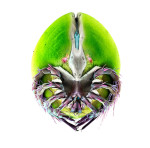
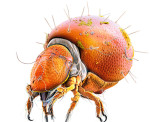
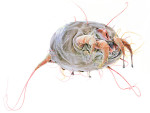
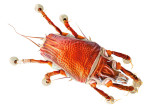

2 Responses to National Geographic mite article